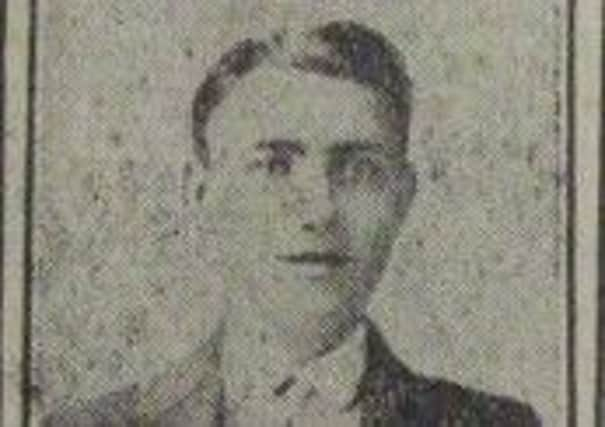Local men witnessed WWI truce


John Stewart is writing a book on the history of both global conflicts to coincide with the anniversary of the outbreak of World War One.
A history graduate, he originally intended to release an edition on the borough’s connections to the First World War this year.
Advertisement
Hide AdAdvertisement
Hide AdHowever, the Knockagh representative has pushed the date back due to the high volume of information he received in the form of letters, photos and other records.
“When war broke out in the summer of 1914, a common saying among the public and fighting men was ‘it’ll all be over by Christmas’,” Cllr Stewart said. “As the fighting intensified on the Western Front and the cold winter drew Christmas 1914 ever closer, the horror and savage deadlock was becoming a stark reality. The BEF, the original British fighting force that was sent to the front in 1914, consisted of no more than 100,000 well trained professional soldiers, including many pre-war regulars and territorial men from Carrick and East Antrim.”
By December 1914, the BEF had moved to hold a continuous sector of the Western Front. “Soldiers from Carrick serving with 1st Battalion Royal Irish Rifles - men such as Rifleman James Dignan, Sergeant Robert Houston, Rifleman Stewart Malone among many others - had all been on active service throughout November and would spend Christmas 1914 in the trenches and be witness to the famous Christmas truce,” Cllr Stewart said.
“Rifleman David Loughlins, another Carrick lad, would spend his last Christmas day on the front lines; he was killed in action just 10 days later.”
Advertisement
Hide AdAdvertisement
Hide AdAs December arrived, tremendous volumes of mail and gifts for the troops were sent from the United Kingdom. King George V sent a Christmas card to every soldier, sailor and nurse; the Princess Mary fund despatched a gift box to every serving soldier.
In the days leading up to Christmas, the attacks continued. On December 21, Carrick man Rifleman David Millar was killed along with scores of other British soldiers. On December 22, a local truce along the front of the 22nd Brigade was agreed and officers reported German soldiers beginning to take British wounded from No Man’s Land. On the 23rd, both sides were heard singing hymns in the trenches.
Cllr Stewart continued: “On Christmas Eve, despite sporadic periods of truce, 98 British soldiers were killed. Conditions in the trenches become more bearable as a hard frost arrived; British infantry are astonished to see many Christmas trees with candles and paper lanterns on enemy parapets.”
On Christmas Day, units behind the lines attended church services and in most cases arranged Christmas dinners which were taken in barns and shattered buildings. In the front lines, the fraternisation of Christmas Eve continued across much of the front. Many bodies that were lying out in No Man’s Land were buried, some in joint burials. Some men exchanged tokens or addresses with German soldiers.
Advertisement
Hide AdAdvertisement
Hide Ad“As night fell, things grew quiet as men fell back to their trenches, with only the sounds of hymns and carols replacing the roar of artillery and rifle fire,” Cllr Stewart said. “Over the coming days things would return to ‘normal’ across the Western Front and the war would soon enter 1915. Within a year, millions of new volunteers would be arriving, among them hundreds from Carrick and East Antrim. The Christmas of 1915 would be a different affair altogether.”